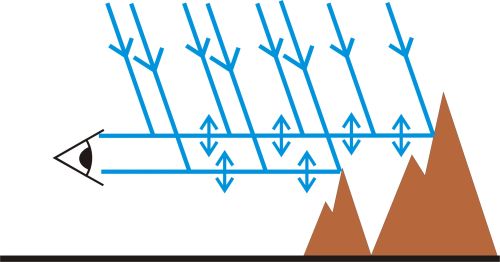Obscured hills - why is a distant hill less distinct than a near one?
Obscured hills - why is a distant hill less distinct than a near one?
LEE Boon-ying
Why is a distant hill less distinct than a near one?
In a normal day, you may see something like the photograph below, i.e. a hill far away is less distinct than a near hill. Why is that?

Let's recall: why is the sky blue? The brightness of the sky depends on the amount of air molecules along the line of sight. More molecules mean a brighter sky. It is similar in the case of a distant hill. A distant hill looks bright, i.e. white, but less distinct because there are more air molecules and particles in between.

Occasionally I do see a distant hill nearly as bright and distinct as a near one. Why is that?
In an exceptional clear day, for example a day with southerly winds in Hong Kong, a distant hill can be nearly as bright and distinct as a near hill because there are fewer particles, i.e. less haze, in between.

In movie scenes, you often see combating spaceships firing bright laser light at one another. This is not real - because in space, there is practically no molecule to scatter light. You could only see the beam that is directly pointed at you.
Reference:
[1] C.F. Bohren, Clouds in a Glass of Beer, Dover Publications Inc., 1987.
[1] C.F. Bohren, Clouds in a Glass of Beer, Dover Publications Inc., 1987.